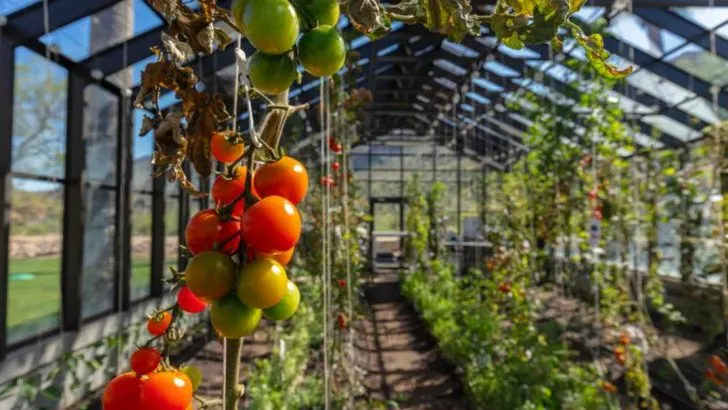Tomato plants need proper support to grow strong, stay healthy, and produce an abundant harvest. Without support, they can become tangled, prone to disease, and difficult to manage. These 12 tomato support solutions will help keep your plants upright, maximize airflow, and make harvesting easier, ensuring a thriving garden all season long.
Stake Support
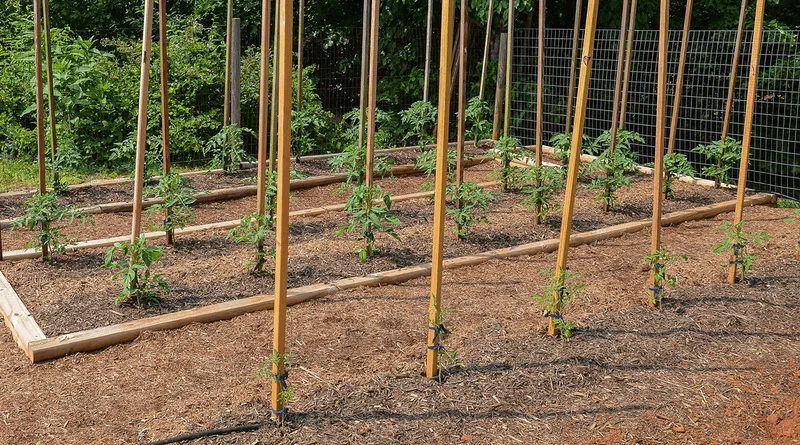
Sturdy wooden stakes can be an effective way to support tomato plants, especially in small gardens. These stakes, driven into the ground, provide a solid framework for tying the tomato vines. Choose stakes that are about 6 to 8 feet tall to accommodate growth. Use soft ties to prevent damage to the stems. This method is ideal for determinate varieties that grow to a predetermined height. Regular monitoring ensures plants are secure without constriction. Adjust ties as the plant grows, providing continuous support and keeping the plant upright and healthy.
Tomato Cages
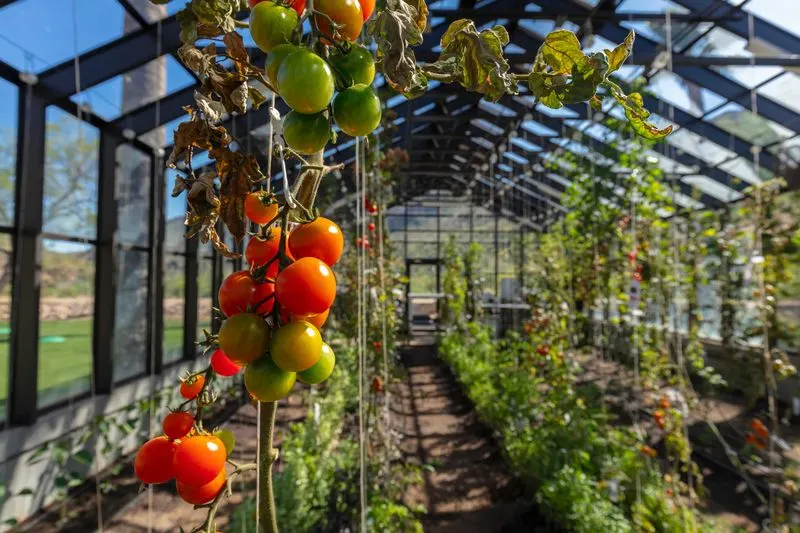
Wire cages are popular for their ease of use and effectiveness. Simply position the cage around the plant early in the growing season. The plant will grow into the cage naturally, requiring minimal intervention. Cages are reusable and can be stored easily when not in use. They provide support for both determinate and indeterminate varieties. Ensure the cage is well-anchored to prevent toppling in windy conditions. This method supports the weight of the growing fruit, keeping it off the ground and reducing the risk of rot and pests.
Trellis System
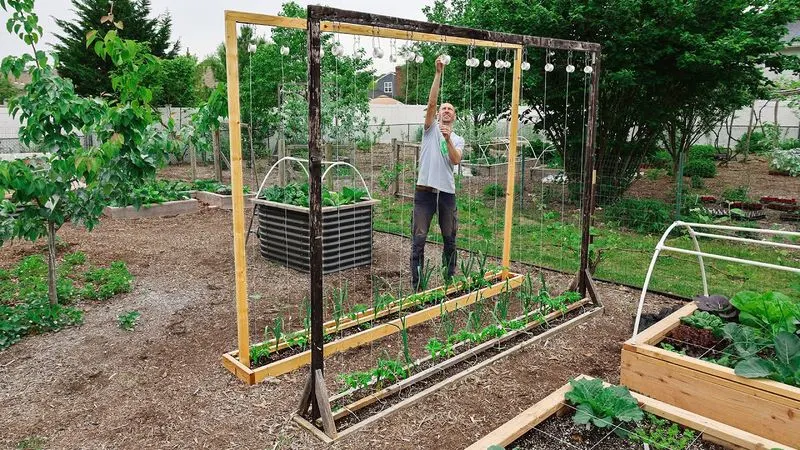
Vertical trellises offer a space-efficient way to train tomato plants upwards. Constructed from materials like wood or metal, trellises require a bit more setup but provide excellent support for indeterminate varieties. Securely tie vines to the trellis as they grow, encouraging upward growth and better air circulation. This method maximizes space, making it perfect for small gardens or urban settings. Harvesting becomes easier as fruits are more accessible. Regular maintenance involves pruning and tying, ensuring the plant stays healthy and productive.
Florida Weave
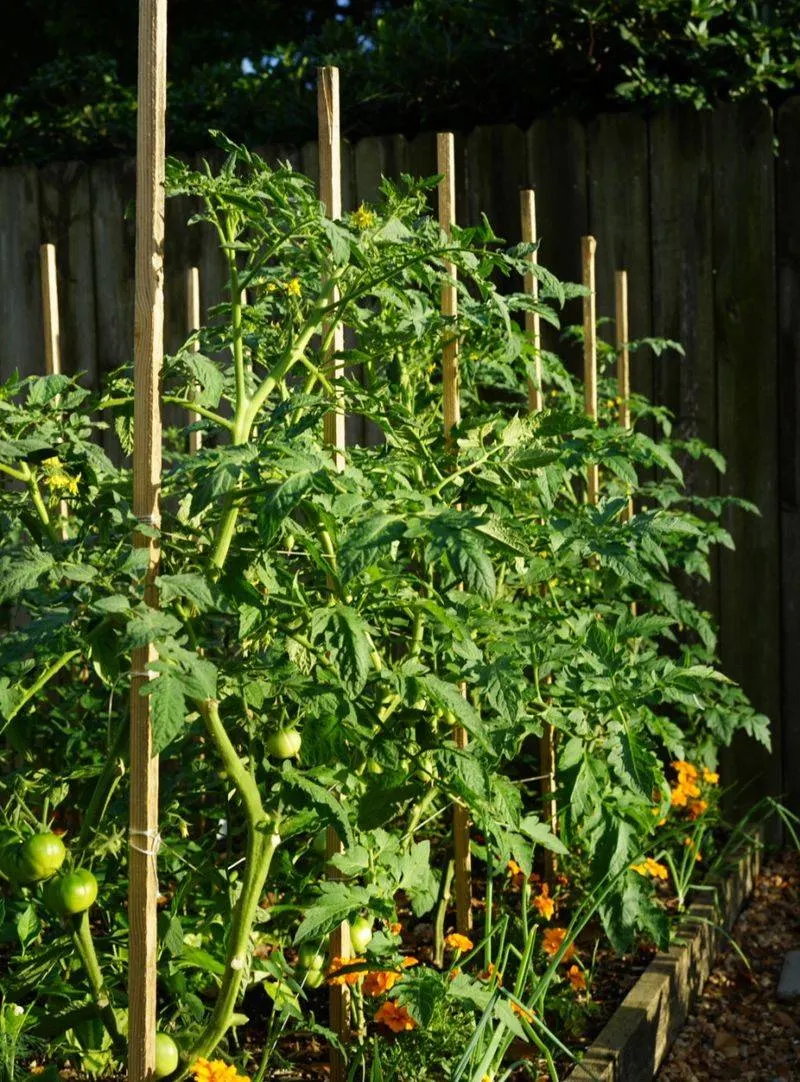
The Florida Weave technique utilizes twine weaved between stakes to support multiple tomato plants in a row. Place stakes about every two to three plants, and weave the twine in a figure-eight pattern. This method offers strong support against wind and heavy fruit. It’s highly effective for determinate varieties and is adaptable to various garden sizes. Regularly adjust the twine to accommodate growth and ensure consistent support. The Florida Weave is budget-friendly and reduces the need for individual plant staking, saving time and effort.
A-Frame Ladder
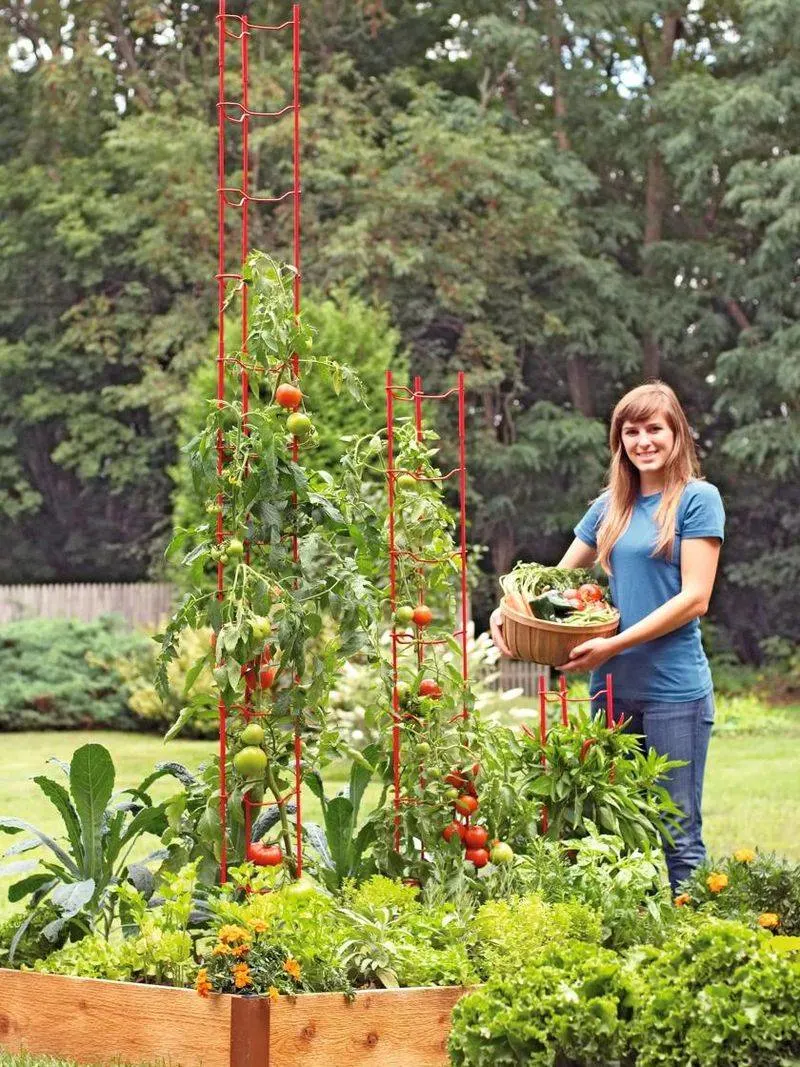
Using an A-Frame ladder as a support system brings a whimsical yet practical touch to your garden. Position the ladder over the tomato plant, allowing vines to climb. This method provides strong vertical support and can be decorative. Ideal for indeterminate varieties, the A-Frame keeps plants off the ground and allows good air circulation. As the plant grows, gently tie the stems to the ladder. This setup doubles as an artistic garden feature and offers easy access for harvesting. Regular checks ensure stability and continued growth.
Bamboo Teepee
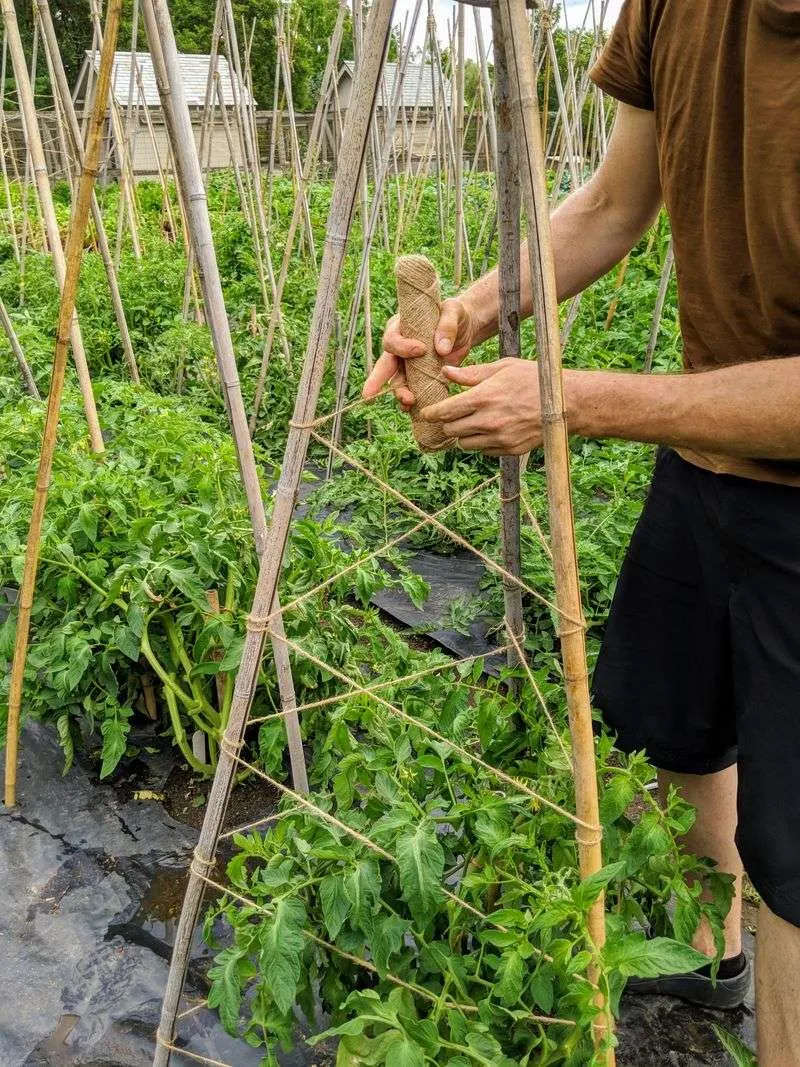
A bamboo teepee creates a natural and strong support structure for tomato plants. Arrange three or more bamboo poles in a teepee shape and secure them at the top. Guide the tomato vines to wrap around the poles. This method enhances air circulation and sunlight exposure, promoting healthy growth. It’s an aesthetic addition to any garden, blending seamlessly with the surroundings. Suitable for both determinate and indeterminate varieties, bamboo teepees are easy to construct and dismantle, providing flexibility and functionality throughout the growing season.
Hanging Planters
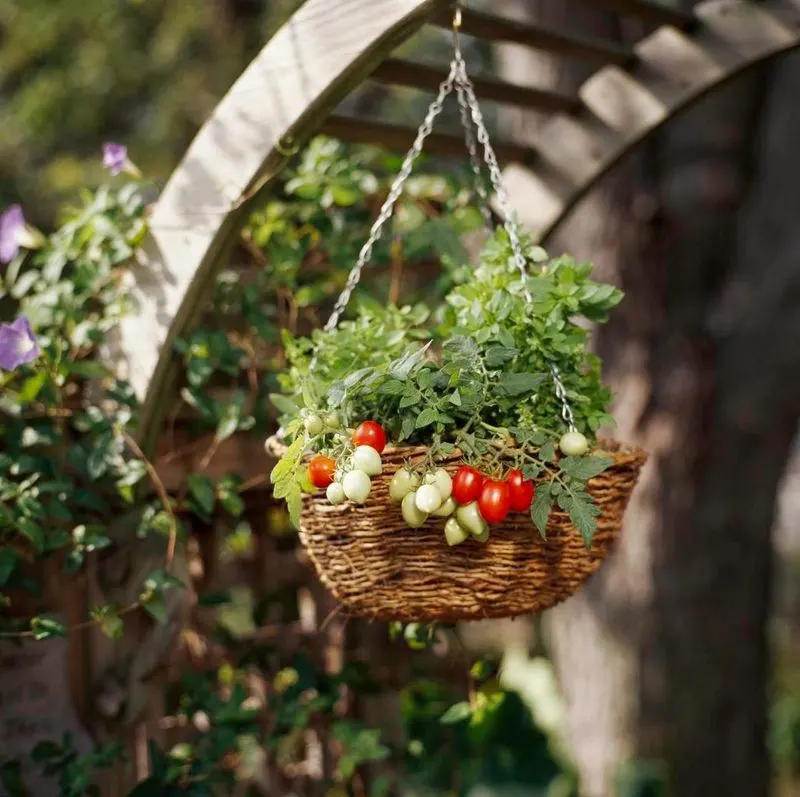
Hanging planters offer a unique twist on traditional tomato growing. Suspend the planters from a sturdy structure, allowing the plants to grow upside down. This method saves ground space and is excellent for patios or balconies. It reduces the risk of soil-borne diseases and pests. Ensure the planter is secure and monitor moisture levels regularly, as they may dry out faster. This approach is both decorative and functional, allowing easy access for harvesting. Choose smaller tomato varieties for optimal results, and enjoy the novelty of inverted growth.
Spiral Stakes
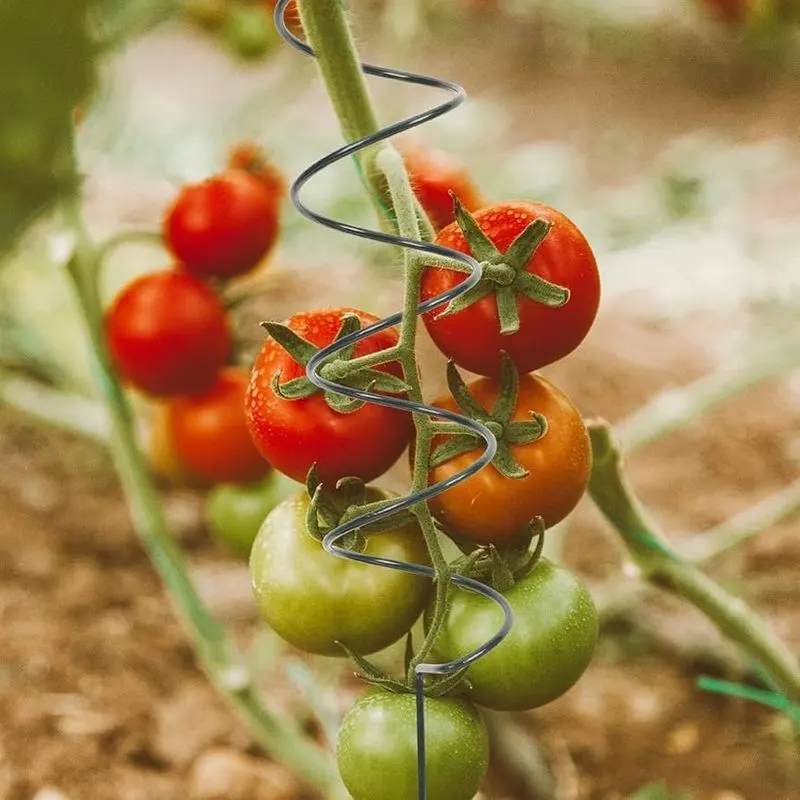
Spiral stakes offer an elegant and efficient way to support tomato plants. These metal stakes are twisted into a spiral shape, allowing vines to grow around them naturally. Simply guide the main stem into the spiral and watch as it climbs. This setup provides excellent support without the need for additional ties or clips. Spiral stakes are reusable and easy to install, making them a favorite for gardeners seeking simplicity. They accommodate both determinate and indeterminate varieties, maintaining plant health and accessibility. The open design encourages air flow and supports fruit weight.
Wall Hooks
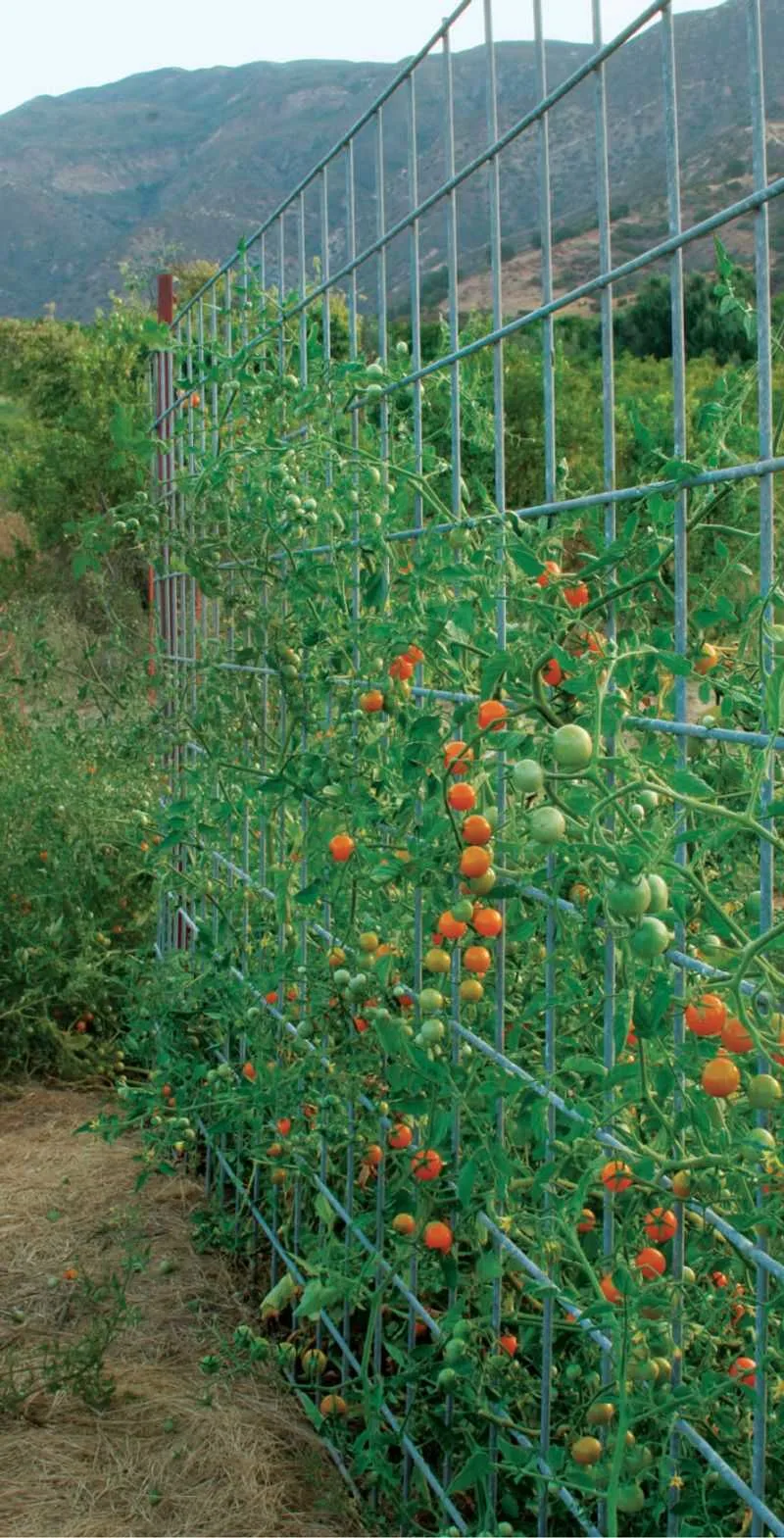
Utilizing wall hooks transforms vertical spaces into thriving garden areas. Attach sturdy hooks to a wall or fence, allowing tomato plants to climb. This method saves ground space and offers a creative solution for small gardens or urban environments. Choose heavy-duty hooks to support the plant’s weight and ensure they are securely fastened. Guide the vines to the hooks as they grow, maintaining neatness and accessibility. This vertical gardening technique enhances aesthetic appeal and allows for easy maintenance and harvesting. It’s an innovative way to incorporate greenery into any space.
Hoop Tunnels
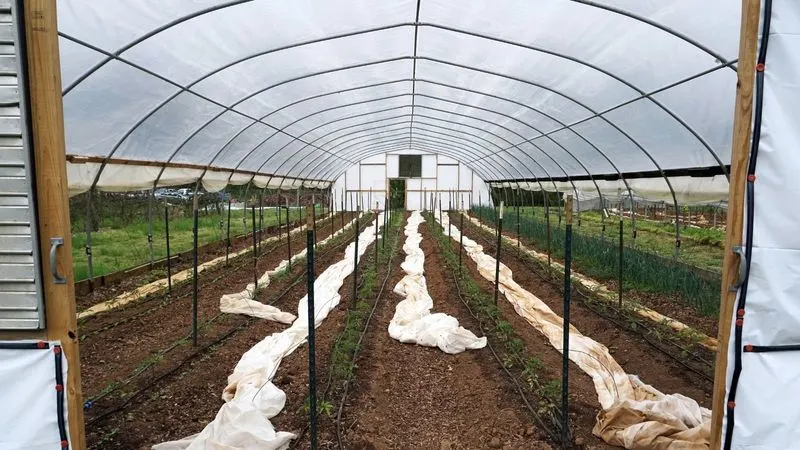
Hoop tunnels provide not only support but also protection from harsh weather. Create a series of hoops from flexible materials like PVC, covered with netting or plastic. This setup shields tomatoes from rain and pests, while offering support for the growing plants. It’s perfect for early-season growth when temperatures fluctuate. Hoop tunnels maintain warmth and humidity, promoting vigorous development. They’re suitable for both small and large gardens, and easily adjustable as plants grow. Regular ventilation prevents overheating, ensuring a thriving environment for your tomatoes.
Tomato Crates
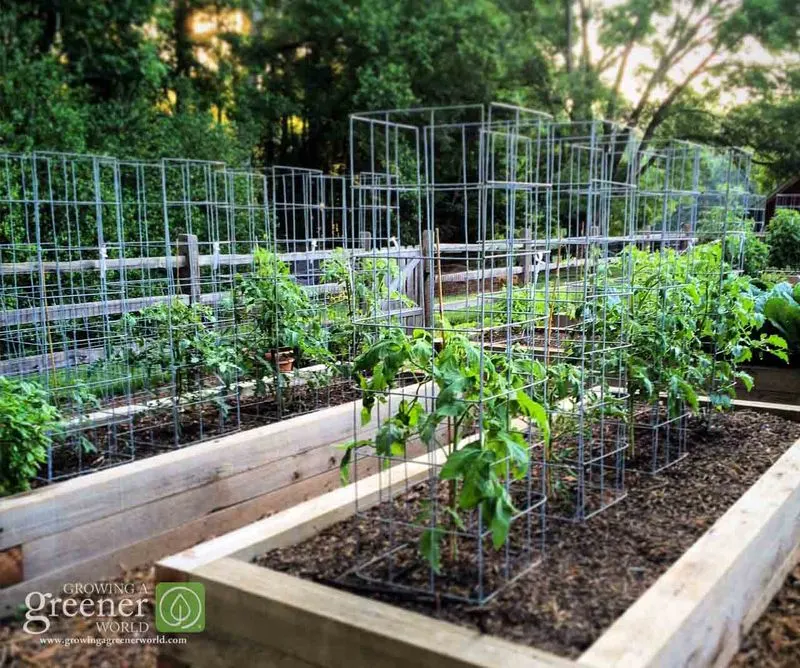
Repurposing wooden crates can offer a creative and functional support system. Position crates around the base of tomato plants, allowing vines to drape over the sides. The structure not only supports growth but also adds rustic charm to your garden. Crates can be stacked or arranged to fit various garden layouts. They provide excellent support for determinate varieties, keeping fruit elevated and reducing rot risk. This approach promotes air circulation and easy access for maintenance. Being easy to move, crates offer flexibility in garden design and plant positioning.
Fencing Panels
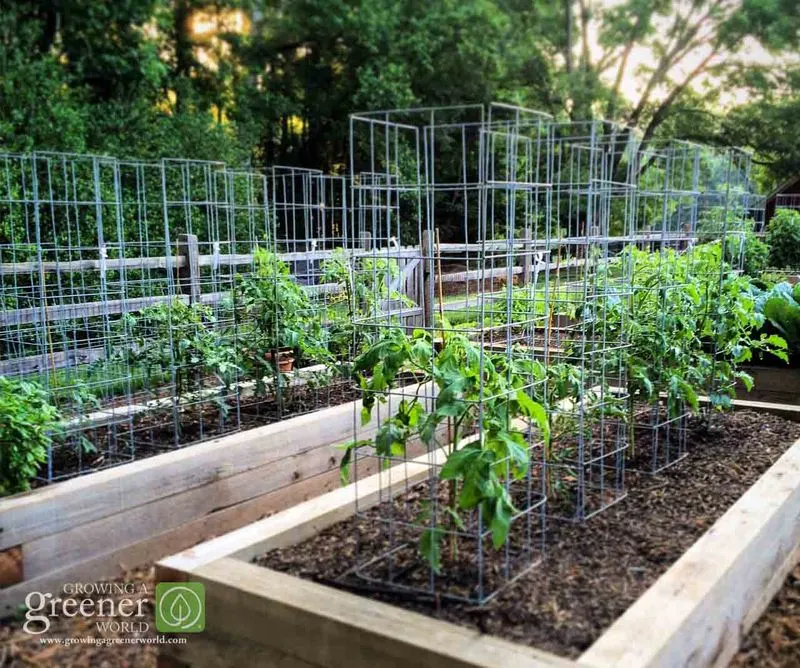
Wire fencing panels can double as sturdy tomato supports. Position the panels vertically along the garden row, allowing plants to climb. This method suits a variety of garden sizes and is particularly useful for indeterminate varieties. Secure the vines with soft ties to prevent damage while ensuring strong support. Fencing panels are durable and reusable, making them a sustainable option. They enhance air circulation and sunlight exposure, promoting healthy growth. Regularly check the ties and adjust as needed. This approach combines functionality with minimal maintenance.

